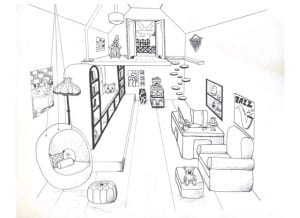
Statement of Intent
For this assignment, I wanted to create a bright but cozy space, specifically one with many options for seating. I have a bit of an unconventional style when it comes to interior design, and I usually opt for unique furniture with lots of display options for my knickknacks. I also included floating stairs to match the whimsical and fun aesthetic of the room!
As for learning and practicing skills, I was very nervous. I usually work digitally, and it is a very different process to working on paper. I practiced using tracing paper to create a final product and really wanted to focus on what we learned about one-point perspective to construct furniture that looked natural in the room, as well as starting to shade things in order to give the room more depth.
Ideation
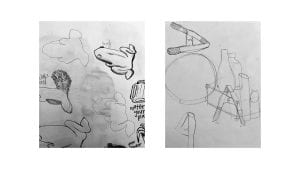



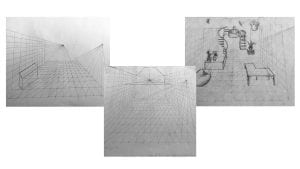
Iteration / Production
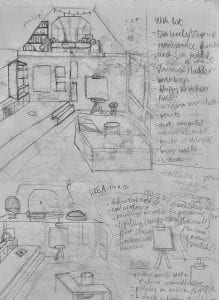
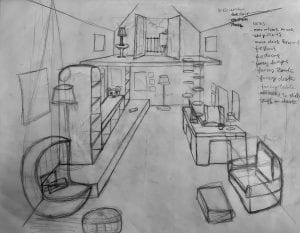




Reflection
It was definitely a challenge to combine all of the skills and methods we learned in class to create this project, but it was also very fun! I really enjoyed the personal element of this project; it kept me motivated and wanting to learn more about how to properly convey the space. Learning one and two point perspective helped me a lot with this piece, especially as I traced and adjusted the furniture throughout the process. Our exercises with triangulation and still life taught me a lot about how designers see things differently than anyone else. The skill I enjoyed and used the most was using basic shapes to create more complex forms; the idea that pretty much every object in the room exists in its own cube or prism proved very helpful as I drew. Now, when I see my studio, I can see the implied forms in each object. It makes drawing on my own even more enjoyable. If I had more time and experience, I would love to explore adding more texture and value to the piece in order to give it more detail.